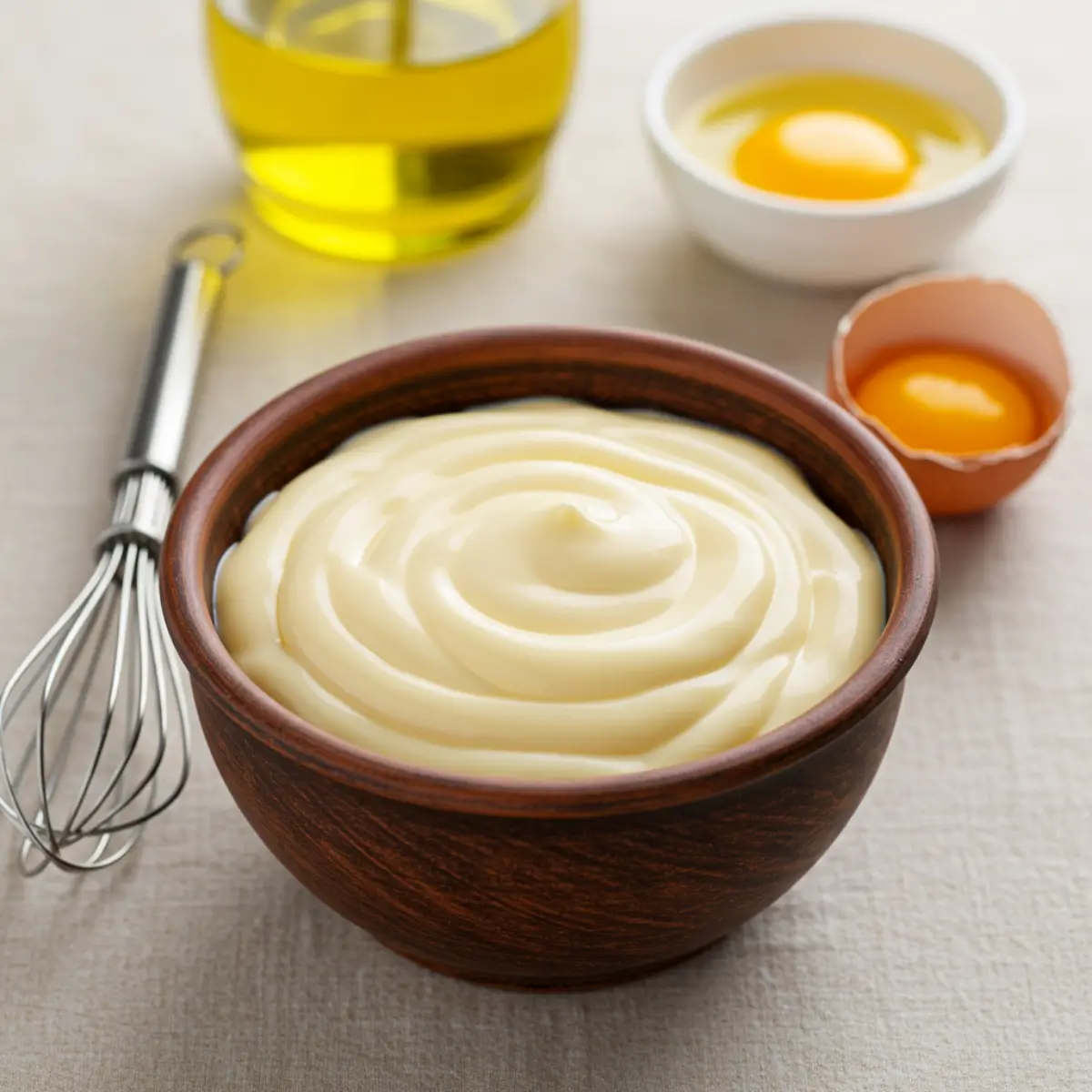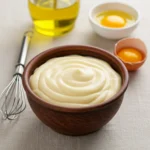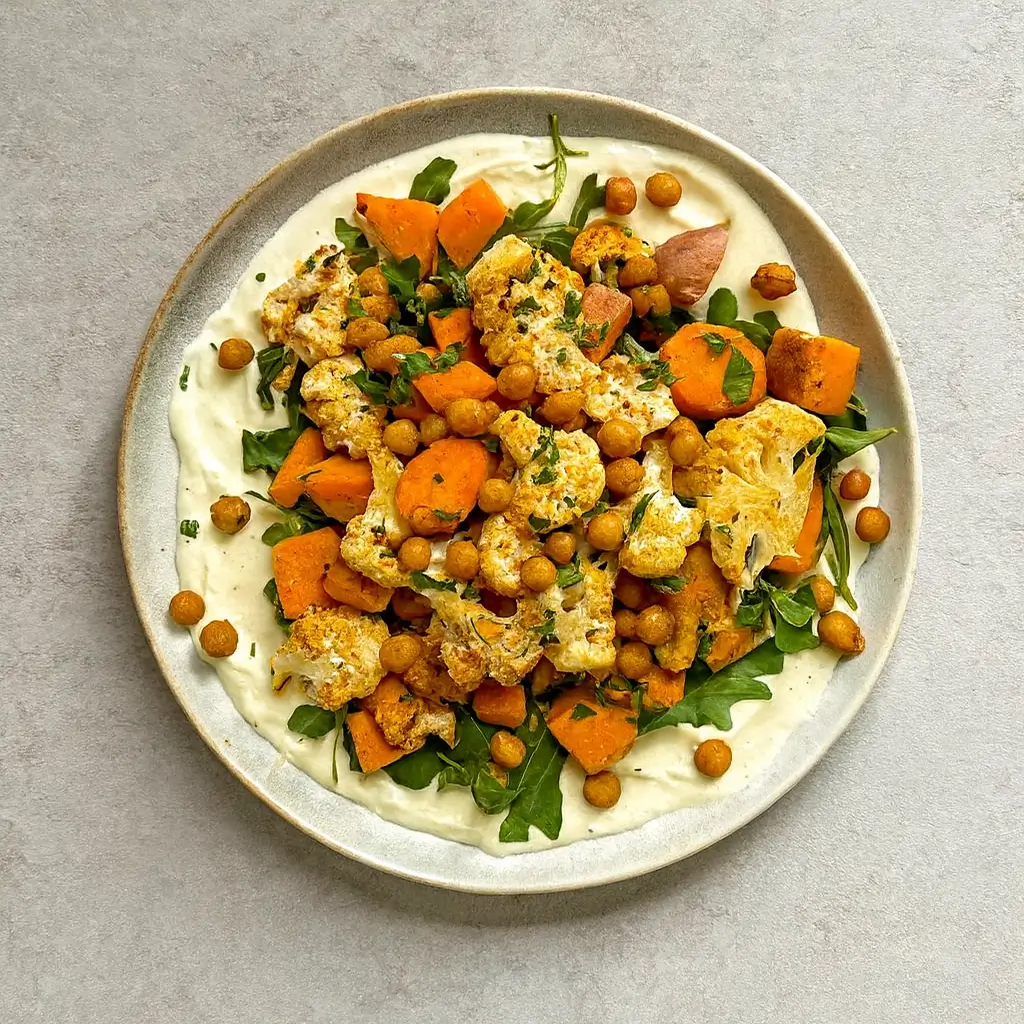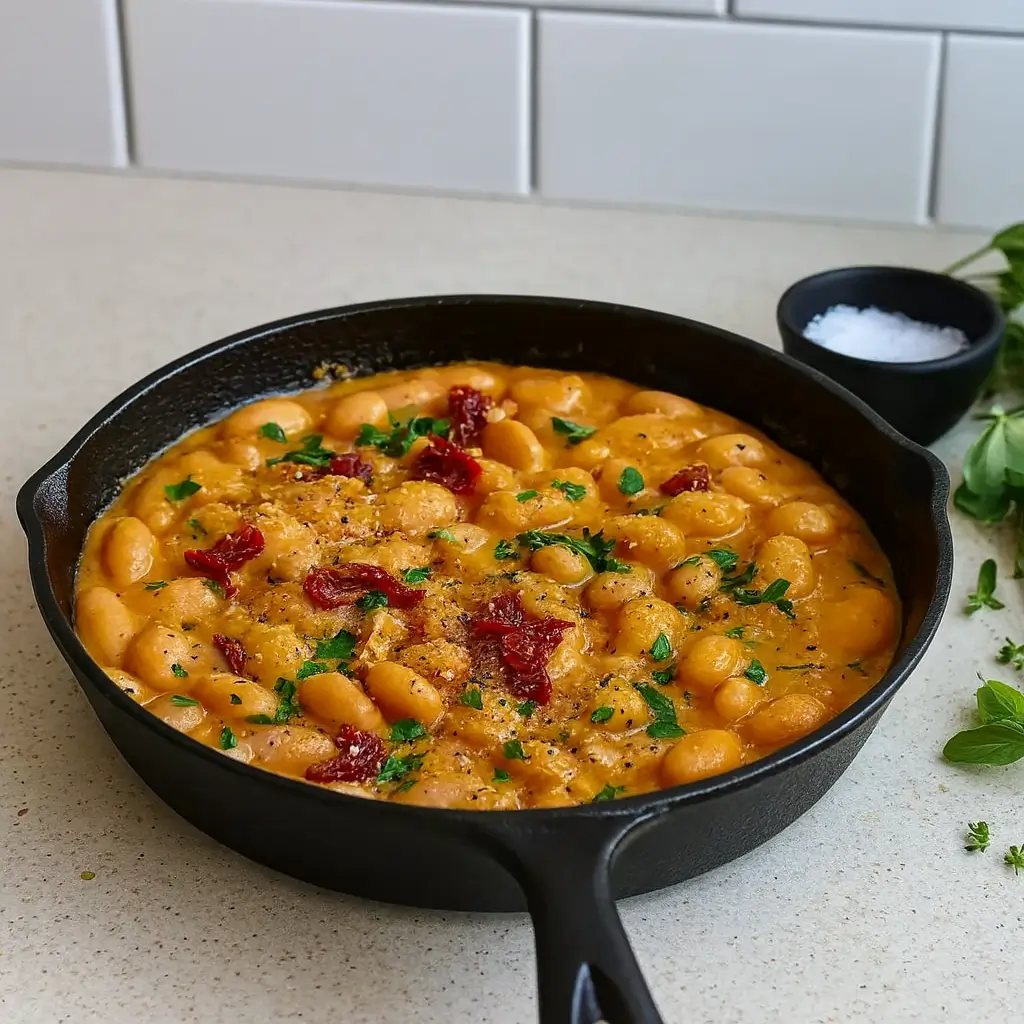Gordon Ramsay mayonnaise recipe is the silky-smooth game changer your sandwiches, burgers, and dipping sauces have been crying out for. Forget bland, store-bought jars—this version is bold, fresh, and incredibly easy to whip up at home. Using just five everyday ingredients and a whisk (or a little elbow grease), you’ll get a rich, creamy mayo that blows anything in the condiment aisle out of the water. In the middle of a hectic week or prepping for weekend brunch, this Gordon Ramsay mayonnaise recipe delivers flavor and confidence in under 10 minutes. Let’s get cracking!
Table of Contents
What is Gordon Ramsay Mayonnaise Recipe?
The Gordon Ramsay mayonnaise recipe is a straightforward, French-style emulsified sauce crafted with only five components: egg yolks, Dijon mustard, sunflower oil, lemon juice or vinegar, and seasoning. The secret involves gradually blending the oil into the yolk-mustard mixture while whisking until achieving that rich, creamy consistency. Ramsay’s version is known for being no-nonsense—he skips overly rich oils and uses sunflower for a clean, neutral base. This mayo isn’t just a condiment—it’s the base for dressings, aioli, and more. Once you make it from scratch, you’ll wonder why you ever settled for a jar.
Reasons to Try Gordon Ramsay Mayonnaise Recipe
If you’ve been burned by broken mayo or unimpressed by store-bought options, this Gordon Ramsay mayonnaise recipe is your redemption. First, it’s way more flavorful—slightly tangy, luxuriously smooth, and customizable to your taste. Second, it’s free from preservatives and mystery ingredients. Plus, you’ll earn serious kitchen street cred. Making your own mayo is one of those “look at me, I’ve got my life together” moments. And let’s be honest, it feels a bit fancy without the actual effort. Pair it with fries, grilled meats, or spread it on a sandwich and taste the difference.
Ingredients Needed to Make Gordon Ramsay Mayonnaise Recipe
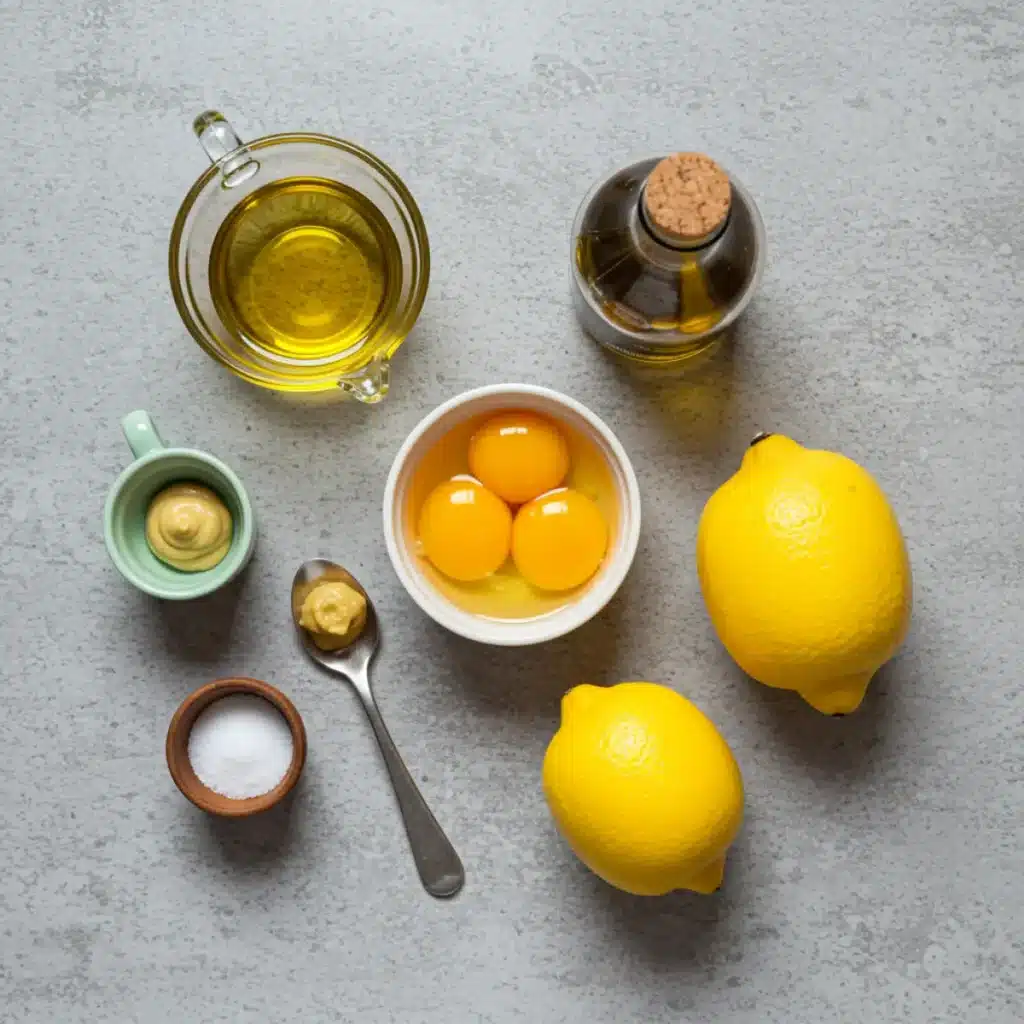
Making this Gordon Ramsay mayonnaise recipe doesn’t require a mile-long ingredient list or a trip to a specialty store. It’s all about using simple, high-quality basics and treating them right. Here’s everything you’ll need to make your own mayo that’s rich, velvety, and full of flavor.
Ingredients:
| Ingredient | Amount | Why It Matters |
|---|---|---|
| Egg Yolks (room temperature) | 2 large yolks | These are the backbone of your mayo. Room temp yolks whip better and emulsify faster. Cold yolks? Not your friend here. |
| Dijon Mustard | 1 tablespoon | Adds sharpness, depth, and helps the emulsion stay stable. Don’t skip it. Regular yellow mustard won’t quite cut it. |
| Sunflower Oil | 250ml (about 1 cup) | This neutral oil keeps the flavor clean and smooth. Olive oil? Too strong and bitter for this job. Canola works too. |
| White Wine Vinegar or Lemon Juice | 2 teaspoons | Brightens up the richness with a pop of acidity. Vinegar gives a sharper zing; lemon juice adds a citrusy note. |
| Salt & Pepper | To taste | A pinch of salt makes the flavors sing. A crack of black pepper adds subtle warmth. Season gradually and taste as you go. |
A few ingredient tips from the test kitchen:
- Room temperature is key. Cold eggs and mustard make the mixture harder to emulsify, and your mayo might split.
- Use a neutral oil. Sunflower is Gordon’s choice for a reason. It keeps the flavor mellow and lets the mustard and yolk shine.
- Acidity does more than add tang. It helps the mayo set and stay thick—especially useful if you plan to store it for a day or two.
Want to make it spicy? Add a pinch of cayenne or a little smoked paprika. Craving a garlic kick? Mash in a roasted clove. Once you master this classic Gordon Ramsay mayonnaise recipe, you’ve got a base for endless variations.
If you’re building out a full Ramsay-style spread, consider pairing this with his crispy oven-baked cauliflower cheese or drizzling it over avocado toast for that creamy contrast.
Instructions to Make Gordon Ramsay Mayonnaise Recipe
Alright, let’s roll up our sleeves and dive into the fun part—actually making the Gordon Ramsay mayonnaise recipe. Don’t worry, this is not one of those chef-y processes that requires obscure tools or impossible techniques. If you’ve got a bowl, a whisk (or an electric mixer if your arms aren’t in the mood), and about 10 minutes, you’re golden. The secret to success? Patience and confidence. Here’s the step-by-step breakdown:
Step 1: Whisk the Egg Yolks and Mustard Together
Start by grabbing a clean mixing bowl—preferably one that won’t slide all over the place while you whisk. Add in your two room temperature egg yolks and that bold tablespoon of Dijon mustard. Using a balloon whisk, mix the two until the mixture looks smooth and a bit glossy. This is the base of your Gordon Ramsay mayonnaise recipe, and it should already look promising. If the yolks are clinging to the sides of the bowl, don’t panic—just keep whisking until everything comes together.
Pro Tip: Room temp ingredients make a huge difference here. Cold yolks are notorious for causing the emulsion to break before it even begins.
Step 2: Begin Adding the Oil—Slowly!
This is where things get real. Pour your sunflower oil into a measuring cup with a pour spout. Start adding it drop by drop into the yolk mixture while whisking constantly. Yes, we said drop by drop. It might feel slow, but this step is crucial for building a stable emulsion. Once you see the mayo starting to thicken and become creamier, you can speed things up slightly—switch to a thin, steady stream while continuing to whisk like your sandwich depends on it.
If your mayo starts to separate or looks oily, don’t panic. Just whisk in a teaspoon of warm water to bring it back. It’s like CPR for broken mayonnaise.
Step 3: Add the Vinegar or Lemon Juice
Once the mixture is thick enough to hold soft peaks (think: soft whipped cream vibes), it’s time to bring some brightness in. Add the 2 teaspoons of either white wine vinegar or fresh lemon juice. This not only balances the richness but also helps stabilize the mayo so it holds up better if you’re storing it. Whisk again to fully incorporate.
Both vinegar and lemon work well, but lemon gives it that subtle citrus zing that makes the Gordon Ramsay mayonnaise recipe taste fresher.
Step 4: Season It to Your Liking
Now we get to the part where you make this mayo your own. Add a generous pinch of salt and a few cracks of black pepper. Then taste. Is it tangy enough? Want it saltier? A little garlic powder or smoked paprika never hurt either. Don’t be shy—this is your masterpiece, after all.
And just like that, your Gordon Ramsay mayonnaise recipe is ready. Thick, silky, and absolutely bursting with flavor.
What to Serve with Gordon Ramsay Mayonnaise Recipe
Once you’ve made this creamy, homemade goodness, the real fun begins—serving it up in delicious ways. This isn’t just some boring sandwich spread. This mayo is versatile, bold, and ready to steal the show on your table.
Slather it onto a BLT, spoon it onto grilled corn, or swirl it into a chicken salad. Want something fancier? Try dolloping it beside crispy roasted potatoes or grilled asparagus. You can even use it as a base for tartar sauce when serving Ramsay’s mussels or a punchy aioli for dipping fries.
For brunch spreads, this mayo brings extra flavor to dishes like avocado toast—just a little swipe under mashed avo adds creaminess and a hint of sharpness.
Oh, and if you’re hosting a backyard barbecue? Serve this alongside Ramsay’s barbecue sauce and you’ll officially become “that person who makes everything from scratch”—and we mean that in the best way.
Bottom line? This mayo plays well with pretty much everything. Make it once, and you’ll start thinking of new reasons to pull it out of the fridge.
Key Tips for Making Gordon Ramsay Mayonnaise Recipe
Homemade mayo can feel intimidating, but with a few tried-and-true tricks, you’ll nail it every time. Whether you’re a seasoned cook or just venturing into the world of whisking, these tips will help you avoid common slip-ups and make your version of this classic turn out smooth and satisfying.
1. Room Temp Matters:
Cold yolks and mustard can ruin the emulsion before it starts. Always let your ingredients sit out for 15–20 minutes before mixing.
2. Go Slow with the Oil:
Seriously—drizzle it like you’re pouring gold. The biggest mistake folks make with this recipe is rushing the oil. Start with drops, then slowly increase to a stream once the mixture thickens.
3. Whisk Like You Mean It:
You don’t need to be Gordon himself, but a steady hand and consistent speed make a big difference. Use a balloon whisk or handheld mixer to make life easier.
4. Adjust Flavor at the End:
Once you get the texture right, taste and tweak. A bit more acid? Maybe a pinch of garlic powder? This is the moment to add your signature twist.
5. Store it Right:
Pop your finished mayo into a clean glass jar and refrigerate it. It’ll keep for up to 3–4 days—if it lasts that long!
These tips aren’t fancy—they’re just practical. And they’re what turn a decent mayo into a show-stopping sidekick. With this kind of care, even a humble sandwich gets the royal treatment it deserves.
Want more Ramsay-level cooking confidence? Try your hand at his butternut squash risotto or shepherd’s pie next.
Storage and Reheating Tips for Gordon Ramsay Mayonnaise Recipe
Let’s talk about what to do after you’ve whipped up that glorious bowl of homemade mayo. The good news? You can absolutely store it—but it’s not the kind of condiment you forget about in the back of your fridge for two months. Since the Gordon Ramsay mayonnaise recipe uses fresh egg yolks and zero preservatives, storage needs to be handled carefully.
Refrigeration:
Spoon your mayo into a clean, airtight jar or container—preferably glass. Pop it into the fridge immediately. It’s best within 3 to 4 days, though some folks stretch it to a week. Just always give it a sniff and a quick stir before using.
No Freezing, Please:
Unfortunately, freezing this mayo isn’t recommended. The emulsion will break and turn into a sad, watery mess. If you’ve ever defrosted mayo, you know—it’s not cute.
What If It Separates?
If your mayo starts to look like it’s separating, don’t toss it! Add a teaspoon of warm water and whisk vigorously. That often brings it back to life.
Reheating? Nope.
This isn’t a heat-it-up kind of condiment. Mayo doesn’t like high temps—it breaks down and loses its texture. Keep it cold and serve it chilled or at room temperature only.
Want to make it last longer without sacrificing flavor? Just make smaller batches more often. You’ll keep that freshly made magic without risking waste or spoilage.
Final Thoughts
Once you’ve tried this creamy homemade delight, there’s no turning back. Whether you’re spreading it on sandwiches, whisking it into dressings, or sneaking spoonfuls straight from the jar (no judgment), this is the kind of recipe that earns a permanent spot in your kitchen routine.
More than just a sauce, it’s a little reminder that cooking doesn’t need to be complicated to be impressive. And when something as simple as mayo tastes this good, you know you’re doing something right. The Gordon Ramsay mayonnaise recipe gives you flavor, control, and just a bit of culinary swagger.
Hungry for more genius from the Ramsay playbook? Check out his sticky toffee pudding or the rich venison Wellington for your next kitchen adventure.
Visit our Pinterest for regular slow cooker recipe updates, or join our Facebook discussions where cooking fans exchange their favorite hearty meal ideas.
FAQs
How to make mayo Gordon Ramsay recipe?
Start with two room-temp egg yolks and Dijon mustard. Slowly whisk in sunflower oil, then finish with lemon juice or white wine vinegar. Season to taste. Full instructions are above, but the secret is patience while adding the oil.
Why is homemade mayonnaise not advisable?
It’s totally safe if you use fresh eggs and keep it refrigerated. That said, because it lacks preservatives, homemade mayo has a shorter shelf life and needs to be eaten within 3–4 days.
What mayonnaise does Ina Garten use?
Ina is famously loyal to Hellmann’s. She often uses it in recipes, especially for tuna and chicken salad. But trust us—once you taste your own batch, you’ll understand the homemade hype.
What is Gordon Ramsay’s best recipe?
That’s tough! His shepherd’s pie is a fan favorite, but many home cooks swear by his omelette technique and apple crumble. Each dish delivers flavor with his signature punch.
Gordon Ramsay Mayonnaise Recipe
This Gordon Ramsay mayonnaise recipe is your go-to for a rich, velvety, flavor-packed mayo that comes together in just 10 minutes. With just a handful of ingredients, you’ll create a smooth and tangy spread that’s better than any store-bought brand. Whether you’re slathering it on burgers, stirring it into dressings, or dipping fries straight in, this foolproof method guarantees creamy perfection every time.
- Prep Time: 10 minutes
- Cook Time: 0 minutes
- Total Time: 10 minutes
- Yield: 1 cup
- Category: Side Dish, Condiment
- Method: Whisking
- Cuisine: French-Inspired
Ingredients
- 2 large egg yolks, at room temperature
- 1 tablespoon Dijon mustard
- 250 ml sunflower oil (or canola for a neutral flavor)
- 2 teaspoons white wine vinegar or fresh lemon juice
- Salt and black pepper, to taste
Instructions
Whisk the Base: In a medium mixing bowl, combine egg yolks and Dijon mustard. Whisk until smooth, pale, and slightly thickened. This forms the foundation of your emulsion.
Drizzle in Oil Slowly: Begin adding the sunflower oil one drop at a time while continuously whisking. Once the mixture starts to thicken, gradually increase to a slow, steady stream. Keep whisking vigorously.
Add Acid for Flavor and Balance: When the mayonnaise reaches a rich, creamy consistency, whisk in the vinegar or lemon juice. This adds brightness and helps stabilize the emulsion.
Season to Taste: Stir in a generous pinch of salt and a few cracks of black pepper. Taste and adjust seasoning or acidity as needed for your perfect flavor.
Notes
- Room Temp Rule: Cold yolks and mustard make it harder to emulsify. Let them sit at room temperature for 15–20 minutes before starting.
- Don’t Rush the Oil: Adding oil too quickly is the #1 reason mayo breaks. Start slow and steady.
- Split Fix: If your mayo starts to separate, whisk in a teaspoon of warm water to bring it back together.
- Oil Matters: Stick with neutral oils like sunflower or canola. Olive oil can overpower the flavor and turn bitter when over-whisked.

